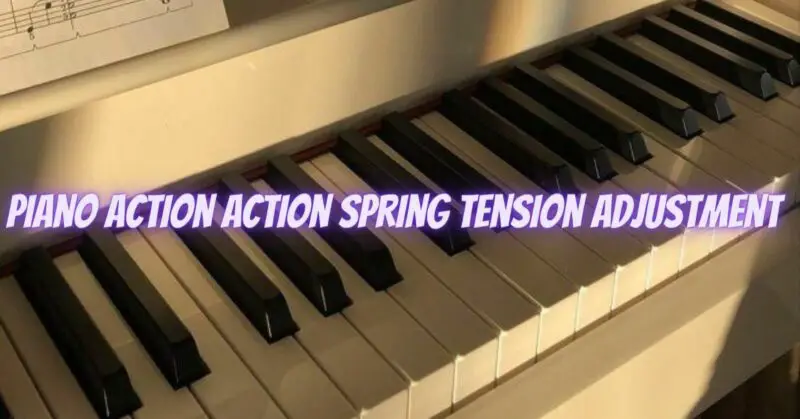The piano action spring tension plays a crucial role in determining the touch and responsiveness of the piano keys. Proper spring tension ensures that the keys return to their original position smoothly after being pressed, allowing for fast repetition and control over the dynamics. However, over time, the spring tension may require adjustment due to wear, environmental factors, or personal preference. In this article, we’ll explore the importance of piano action spring tension, the signs that adjustment is needed, and the steps to perform this adjustment.
Understanding Piano Action Spring Tension: The piano action is a complex mechanism that connects the piano keys to the hammers responsible for striking the strings. Springs are an integral part of the action and are responsible for providing the necessary force to return the keys to their resting position after being played. The right balance of spring tension ensures a comfortable and controlled playing experience, facilitating rapid and accurate repetition.
Signs That Spring Tension Adjustment Is Needed:
- Heavy Touch: If the keys feel excessively heavy or require significant effort to depress, the spring tension may be too high.
- Light Touch: Conversely, if the keys feel too light and return too quickly, the spring tension might be too low.
- Uneven Key Response: Inconsistent key response or some keys feeling different from others may indicate an imbalance in spring tension.
- Key Sluggishness: Keys not returning promptly to their original position or feeling sluggish can also signal the need for spring tension adjustment.
Adjusting Piano Action Spring Tension: Performing a piano action spring tension adjustment is a delicate process that requires precision. It is recommended to seek the expertise of a professional piano technician to ensure the adjustment is done accurately. However, here is a general overview of the steps involved:
- Access the Action: The technician removes the piano action from the piano to access the springs and other components.
- Identify the Springs: The technician identifies the various types of springs present in the action, including damper springs and hammer return springs.
- Inspect the Springs: Each spring is inspected for signs of wear, damage, or corrosion that may affect its performance.
- Adjustment: The technician carefully adjusts the tension of the springs using specialized tools. This may involve stretching or compressing the springs as needed.
- Test and Fine-Tune: After making the adjustments, the piano action is tested to evaluate the touch and responsiveness. The technician fine-tunes the spring tension until the desired touch is achieved.
- Reassembly: Once the adjustments are complete, the piano action is reassembled and installed back into the piano.
Conclusion: The piano action spring tension adjustment is a critical aspect of piano maintenance that directly affects the piano’s playability and touch. An experienced piano technician can accurately assess the spring tension and make the necessary adjustments to achieve the desired touch and response. Regular maintenance, including spring tension checks, ensures that your piano continues to provide a comfortable and expressive playing experience. If you notice any issues with the touch or responsiveness of your piano keys, seeking the assistance of a qualified piano technician for spring tension adjustment can help restore your piano to its optimal condition and ensure years of enjoyable playing.

